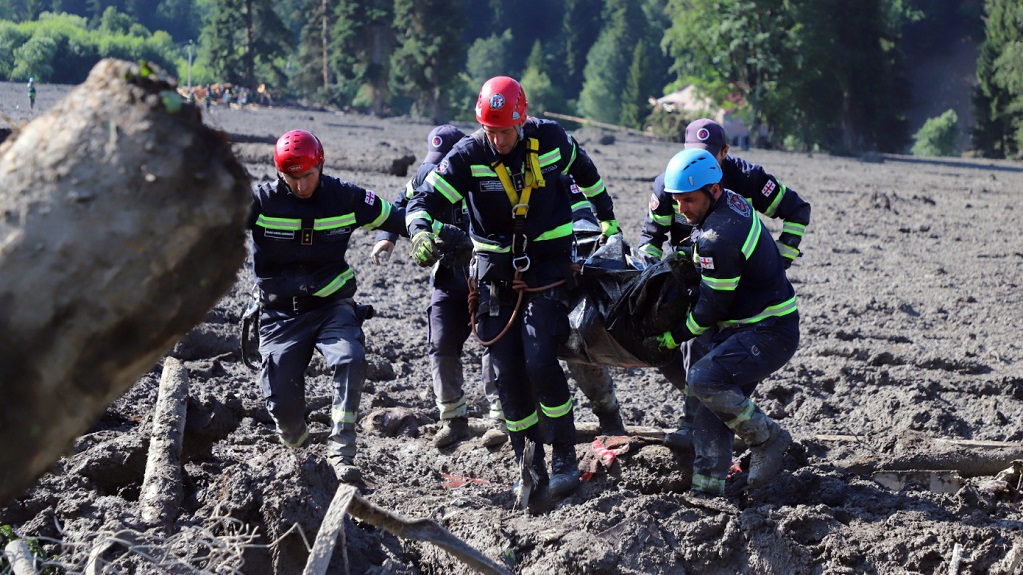Since the natural disaster of August 3rd in Shovi resort, only 28 people in the affected zone have gotten tetanus shots, despite the fact that in the last week, up to 800 rescuers, hundreds of military personnel, more than 200 local residents, and just as many volunteers have been involved in the search and rescue operation. Tetanus is a life-threatening infection. The bacterium that causes this disease is found almost everywhere in mud and polluted water. It penetrates the skin through a cut or scratch, after which it multiplies and releases poison. The toxin damages the nervous system. Without treatment, respiratory muscle paralysis develops. The prognosis is serious, the lethality rate is 40-50%.
News
Trending stories
- 1 BBC investigation: WWI–Era Chemical Weapons Used to Disperse Tbilisi Protests
- 2 Starting in 2026, First-Year Students at Private Universities Will No Longer Receive State Grants
- 3 NGOs Demand Answers on Which Chemical Substances MIA Used Against Protesters
- 4 Kobakhidze and Putin Attend International Forum on Neutrality in Turkmenistan
- 5 Geostat: The Average Salary in Georgia Is 2,271 GEL
- 6 Zurabishvili Appeals to International Organisations to Investigate Possible Use of “Camite”
The disease usually progresses quickly - the patient has difficulty opening his mouth and chewing, the forehead becomes wrinkled, and the slit in the eye narrows, which gives the impression of a mocking smile. Gradually, tension and convulsions of the whole body’s muscular apparatus will develop.
It is noteworthy that for at least the first 4 days after the disaster, people near the approaches to Shovi, up to where the police allowed them to go - relatives of the missing, journalists, rescuers, and other people, drank water from a spring located in an elevated area. No one warned them that the water was not tested and could be dangerous to drink.
“Drinking from that water, as well as food products that are provided to rescuers, is dangerous, and relevant services see it. It's dangerous, of course, to touch the ground [mud], a corpse,” says Nona Bakuradze, director of the Public Health Center of Oni Municipality.
“Tetanus vaccination is necessary. For this purpose, our mobile brigade works in Shovi every day, but the rescuers approach us less often. They tell us that they will finish their work and then get a shot, although it is preferable to vaccinate quickly. Heavy physical activity is not recommended for several hours after the injection. If they receive a shot in the evening, they can work normally the next day. The vaccine is also safe. 16 people were vaccinated on the spot and 12 in the hospital.
The causative agents of tetanus are found in the soil. The first danger is the person who was in the disaster zone. Maybe they were not injured but had contact with the ground, the corpse. Such people should definitely contact us. Everyone in that area should be vaccinated.
Tetanus is a very serious infection that causes numbness, and as a result of improper treatment, there is a great risk of death,” the epidemiologist notes.
According to Nona Bakuradze, it's not too late to vaccinate those people who were in contact with the disaster area in the first days of the disaster, but it is important to contact public health centers soon.
High temperatures further increase the risk of an epidemic in the disaster zone, especially when the search for 12 people missing since August 3 is ongoing. Cattle were also killed in the natural disaster zone, swept away by the flood.
According to the expected weather forecast, the temperature in East Georgia will reach 41◦C this week. “In the mountainous regions of the country, the highest temperature of the day will reach +33, +38◦C, in the high mountains to +28, +33◦C”, says the statement published by the National Environmental Agency.
In Racha, on the territory of Shovi resort, the glacial avalanche on August 3 destroyed the resort almost completely. So far, 21 bodies have been found, of which 19 have been identified. According to official information, 12 are considered missing, including children. The rescue operation at the place of the disaster started only three hours after the mudslide, people stuck in the mud were asking for urgent help.















